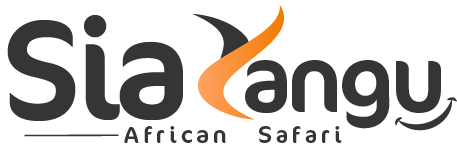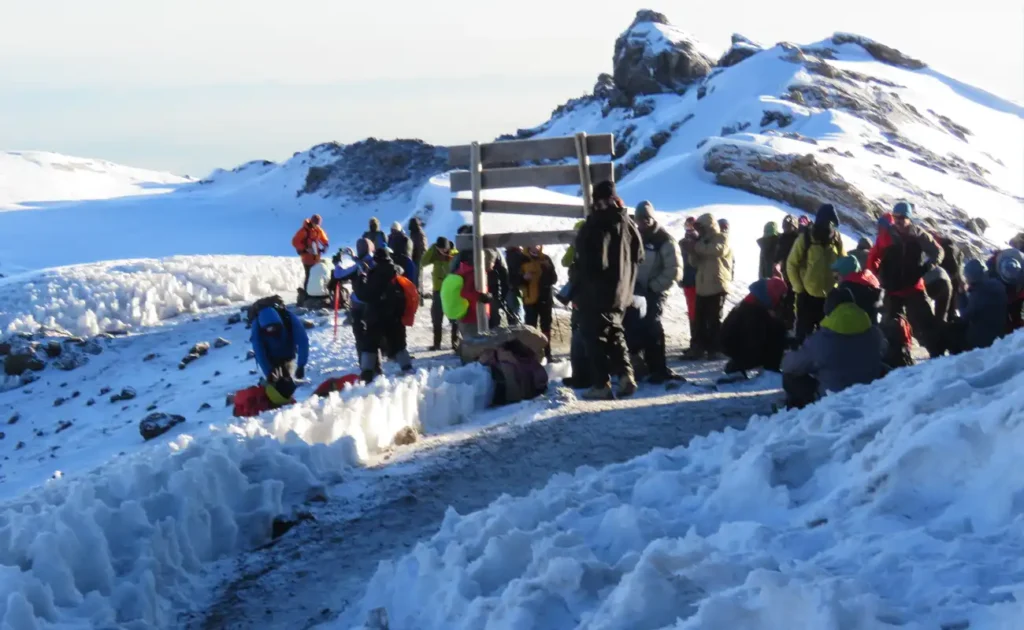With over 11 million students enrolled across various levels, the Tanzanian education system embodies a dynamic landscape striving for growth. A notable aspect is the implementation of free primary education which has drastically increased enrollment rates. Yet challenges such as inadequate infrastructure and teacher shortages persist.
Historically, post-independence Tanzania embraced the motto “Education for Self-Reliance” initiated by Julius Nyerere. Today, around 80% of children aged 7-13 attend primary school, highlighting significant progress. Continuous efforts to improve quality and accessibility underscore the nation’s commitment to transformative education.

Overview of Tanzania’s Education System
Tanzania’s education system is structured into three main levels: primary, secondary, and higher education. Children start primary school at age seven. Primary education is free and compulsory, lasting seven years. The curriculum focuses on subjects like Math, Science, and English. Despite being free, some families struggle with additional costs like uniforms and books.
Secondary education follows primary and is divided into two cycles: Ordinary Level and Advanced Level. The Ordinary Level lasts four years, culminating in a national exam. Students who pass this exam can attend Advanced Level, which lasts two years. This level prepares students for university or vocational training programs. Unfortunately, not all students can afford to continue their education.
Higher education in Tanzania includes universities, colleges, and vocational schools. There are both public and private institutions offering a variety of programs. The University of Dar es Salaam is one of the oldest and most prestigious universities. However, access to higher education remains limited due to financial constraints and competition. Scholarships and financial aid are available but not sufficient for all.
The government of Tanzania is making efforts to improve the quality of education at all levels. They aim to address issues such as teacher shortages and outdated materials. Recent reforms include the introduction of digital learning tools in classrooms. Here are some key priorities for the education sector:
- Improving school infrastructure
- Enhancing teacher training programs
- Expanding access to technological resources
These efforts are crucial for the country’s development and the future of its youth.
Key Stages and Structure of Education in Tanzania
Education in Tanzania begins with pre-primary education, which is for children aged 5 to 6. This stage is intended to prepare children for primary school. It focuses on basic literacy, numeracy, and social skills. Despite its importance, not all children attend pre-primary school due to accessibility issues. Efforts are being made to increase enrollment at this foundational level.
Primary education is the next stage and it lasts for seven years, from Standard 1 to Standard 7. This stage is compulsory and free for all children. The curriculum includes subjects like Mathematics, Science, Kiswahili, and English. At the end of Standard 7, students take the Primary School Leaving Examination (PSLE). Passing this exam is necessary to move on to secondary education.
Secondary education is divided into two levels: Ordinary Level (O-Level) and Advanced Level (A-Level). The O-Level covers Form 1 to Form 4, usually for students aged 14 to 17. After completing this level, students take the Certificate of Secondary Education Examination (CSEE). A higher score on this exam allows students to continue to A-Level, which lasts two years and ends with the Advanced Certificate of Secondary Education Examination (ACSEE).
Higher education includes universities, colleges, and vocational training institutions. Institutions offer programs ranging from diplomas to doctoral degrees. Public and private universities both play a significant role in this stage. Some well-known universities include the University of Dar es Salaam and the Open University of Tanzania. Vocational training is also emphasized to equip students with practical skills for the job market.
Challenges Facing the Tanzanian Education Sector
One major challenge is the shortage of qualified teachers across the country. Many schools, especially in rural areas, struggle to attract and retain skilled educators. As a result, class sizes can be very large, affecting the quality of education. In some cases, one teacher may handle more than 60 students. This makes it difficult to give each student the attention they need.
Another problem is inadequate infrastructure, which includes a lack of classrooms, desks, and teaching materials. Many schools operate in poor conditions, with limited access to electricity and clean water. This environment impacts students’ ability to learn effectively. To address this, the government and NGOs are working to improve school facilities. However, funding constraints slow down progress.
Poverty also poses a significant obstacle to education in Tanzania. Although primary education is free, there are hidden costs like uniforms and supplies. Families struggling to make ends meet may prioritize work over school attendance. This is particularly true in rural areas where children often help with farming and other chores. Scholarships and financial aid programs aim to reduce this burden, but they are not always sufficient.
Gender disparity is another issue, although it has been improving over the years. In some communities, girls are less likely to receive an education compared to boys. Cultural attitudes and economic pressures often favor boys’ education. Initiatives to promote girls’ education include awareness campaigns and incentives. These efforts are essential to achieving educational equity.
Innovative Solutions and Reforms in Tanzanian Education
To address teacher shortages, Tanzania has implemented new training programs. These programs focus on equipping teachers with modern teaching methods. Additionally, the government has introduced incentives to attract teachers to rural areas. These include housing allowances and hardship stipends. With these measures, more qualified teachers are expected to join the workforce.
Technology is playing a transformative role in Tanzanian education. Schools are introducing digital tools to enhance learning and teaching. Tablets and online resources help students access information beyond textbooks. The government is also pushing for the integration of ICT into the curriculum. This approach aims to make students more competitive in the global job market.
Efforts to improve infrastructure are also underway. New classrooms are being built, and old ones are being renovated. Many schools are receiving essential facilities like clean water and electricity. Organizations are partnering with the government to fund these projects. Better infrastructure creates a conducive learning environment for students.
Certain initiatives aim at making education more inclusive. Special programs cater to children with disabilities and those in remote regions. Mobile classrooms and community-based education centers serve students who can’t attend regular schools. These solutions help ensure that no child is left behind. Education for all remains a key goal for Tanzania.
Engaging the community has proven effective in educational reforms. Parents and local leaders are encouraged to participate in school management. This involvement increases accountability and ensures that resources are used properly. School committees help monitor progress and address issues quickly. A collaborative approach leads to better outcomes for students.
The Role of Technology in Enhancing Learning in Tanzania
Technology has become a crucial element in modernizing education in Tanzania. Schools are incorporating digital tools to supplement traditional teaching methods. Many classrooms now have access to tablets, computers, and projectors. These tools make learning interactive and engaging for students. Access to the internet also allows students to explore a wealth of resources online.
Online learning platforms are also gaining popularity. They provide access to lectures, tutorials, and educational materials that can be accessed anytime. This flexibility is particularly beneficial for students in remote areas. Even if they can’t attend school physically, they can still continue their education. It bridges the gap between urban and rural education.
Radio and television educational programs are another innovation. They broadcast lessons on various subjects to a wide audience. This approach is effective for reaching students without internet or advanced gadgets. It ensures that more children can benefit from quality education. These programs are often led by experienced educators and experts.
In partnership with tech companies, the government has launched several initiatives. These initiatives focus on improving digital literacy among both students and teachers. Regular training programs help educators stay updated on the latest technologies. This ensures that they can effectively integrate these tools into their lessons. It’s a collaborative effort to boost the overall quality of education.
- Boosting digital literacy through training
- Implementing online learning platforms
- Providing digital devices to schools
Challenges remain, but progress is significant. Limited resources and connectivity issues pose hurdles. However, ongoing efforts by the government and NGOs are making a difference. With continued advancements, technology will play an even larger role in Tanzanian education. The future looks promising as more schools embrace digital learning.
Future Prospects for Education in Tanzania
The future of education in Tanzania looks promising with various reforms in progress. The government is committed to increasing the education budget. This will help in building more schools and improving existing infrastructure. More classrooms will mean reduced overcrowding and better learning environments. Additionally, there will be a significant focus on teacher training programs.
Technology will continue to play a central role in education. Plans are underway to expand internet access to more schools, especially in rural areas. This will enable students and teachers to utilize online resources effectively. Digital learning platforms and tools will be integrated into the curriculum. This approach aims to modernize education and make it more interactive.
Efforts to ensure gender equality in education will also be intensified. Campaigns to encourage the enrollment of girls in school will be strengthened. Scholarships and financial assistance programs will be expanded. These initiatives will help remove barriers to education for girls and other marginalized groups. A more inclusive education system will be beneficial for overall development.
Vocational education and training will be prioritized to meet the demands of the job market. More vocational schools and training centers will be established. These institutions will offer hands-on training in various trades and professions. This will help in reducing unemployment and creating a skilled workforce. Collaboration with industries will ensure that the training is relevant and up-to-date.
Community involvement in education will be encouraged further. Parents and local leaders will play a stronger role in school management. This involvement will increase accountability and transparency in the use of resources. Community support is essential for successful educational reforms. Together, these efforts will shape a brighter future for Tanzanian education.




